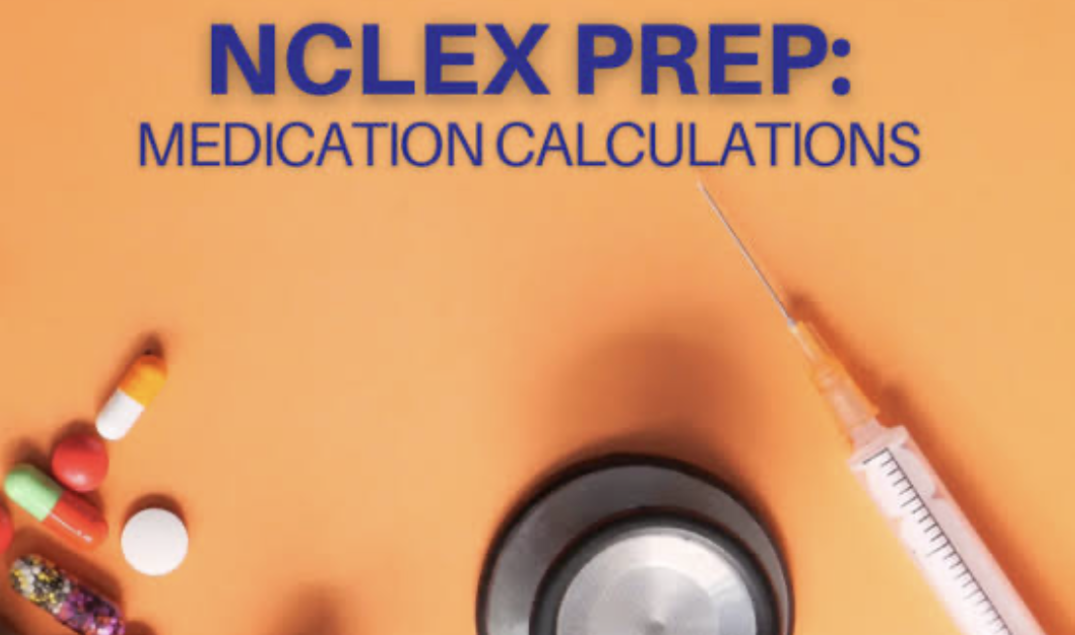PEDIATRIC MEDICATION DOSAGE CALCULATIONS: SIMPLIFYING COMPLEX MATH FOR NCLEX SUCCESS

Introduction:
Calculating medication dosages for pediatric patients can feel like trying to solve a complex puzzle, especially when preparing for the NCLEX exam. However, with a clear understanding of the principles and a bit of practice, you can master this essential skill. This guide aims to simplify pediatric medication dosage calculations, making them more approachable and ensuring NCLEX success.
1. Understanding the Basics:
Children are not just “small adults”; their bodies process medications differently. Therefore, dosages often depend on weight (in kilograms) or body surface area (BSA). The primary methods include:
• Weight-Based Dosing: Most pediatric dosages are calculated using the child’s weight. The formula is:
Desired Dose (mg) = Dosage per kg (mg/kg) × Weight (kg)
• Body Surface Area (BSA): For certain medications, especially chemotherapy drugs, dosages are based on BSA. The formula is:
BSA (m²) = √[(Height in cm × Weight in kg) / 3600]
2. Common Calculation Methods:
• Clark’s Rule: This rule estimates a child’s dose based on weight:
Child’s Dose = (Weight in lbs / 150) × Adult Dose
For example, if an adult dose is 30 mg and the child weighs 30 lbs:
Child’s Dose = (30 / 150) × 30 mg = 6 mg
• Young’s Rule: This rule uses the child’s age:
Child’s Dose = [Age in years / (Age + 12)] × Adult Dose
For instance, for a 4-year-old child with an adult dose of 200 mg:
Child’s Dose = [4 / (4 + 12)] × 200 mg = 50 mg
3. Practical Tips for Accurate Calculations:
• Double-Check Units: Ensure weight is in kilograms and height in centimeters.
• Use Reliable Tools: The Broselow Tape is a color-coded tool that provides medication dosages and equipment sizes based on a child’s length.
• Stay Updated: Always refer to the latest pediatric dosage guidelines and protocols.
4. Practice Questions:
1. Question: A physician orders Amoxicillin for a child weighing 20 kg. The recommended dose is 25 mg/kg/day, divided into two doses. What is the dose per administration?
Answer: Total daily dose = 25 mg/kg × 20 kg = 500 mg.
Dose per administration = 500 mg / 2 = 250 mg.
2. Question: Calculate the BSA for a child weighing 18 kg and measuring 100 cm in height.
Answer: BSA = √[(100 cm × 18 kg) / 3600] ≈ 0.74 m².
3. Question: Using Clark’s Rule, determine the dose for a child weighing 40 lbs if the adult dose is 200 mg.
Answer: Child’s Dose = (40 lbs / 150) × 200 mg ≈ 53.3 mg.
4. Question: A 6-year-old child is prescribed a medication with an adult dose of 100 mg. Using Young’s Rule, what is the appropriate pediatric dose?
Answer: Child’s Dose = [6 / (6 + 12)] × 100 mg = 33.3 mg.
5. Question: A medication is prescribed at 10 mg/m² for a child with a BSA of 0.5 m². What is the correct dose?
Answer: Dose = 10 mg/m² × 0.5 m² = 5 mg.
Conclusion:
Mastering pediatric medication dosage calculations is crucial for safe and effective nursing care. By understanding the foundational principles and practicing regularly, you can approach these calculations with confidence, ensuring both NCLEX success and the well-being of your young patients.






